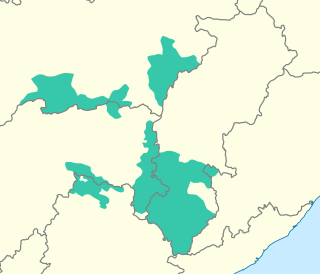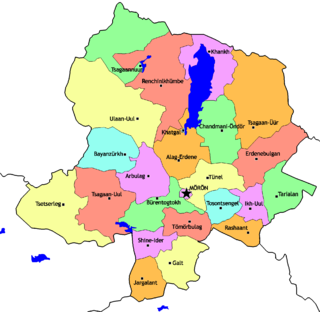Related Research Articles

Asia is home to hundreds of languages comprising several families and some unrelated isolates. The most spoken language families on the continent include Austroasiatic, Austronesian, Japonic, Dravidian, Indo-European, Afroasiatic, Turkic, Sino-Tibetan, Kra–Dai and Koreanic. Many languages of Asia, such as Chinese, Sanskrit, Arabic,Tamil or Telugu, have a long history as a written language.

The Gondi (Gōṇḍī) or Gond people, who refer to themselves as "Koitur", are an ethnolinguistic group in India. Their native language, Gondi, belongs to the Dravidian family. They are spread over the states of Madhya Pradesh, Maharashtra, Chhattisgarh, Uttar Pradesh, Telangana, Andhra Pradesh, Bihar, and Odisha. They are listed as a Scheduled Tribe for the purpose of India's system of reservation.

Adyghe is a Northwest Caucasian language spoken by the western subgroups of Circassians. It is spoken mainly in Russia, as well as in Turkey, Jordan, Syria and Israel, where Circassians settled after the Circassian genocide by the Russian Empire. It is closely related to the Kabardian language, though some reject the distinction between the two languages in favor of both being dialects of a unitary Circassian language.

Jin is a group of varieties of Chinese spoken by roughly 48 million people in northern China, including most of Shanxi province, much of central Inner Mongolia, and adjoining areas in Hebei, Henan, and Shaanxi provinces. The status of Jin is disputed among linguists; some prefer to include it within Mandarin, but others set it apart as a closely related, but separate sister-group.
The Han Chinese people can be defined into subgroups based on linguistic, cultural, ethnic, genetic, and regional features. The terminology used in Mandarin to describe the groups is: "minxi", used in mainland China or "zuqun", used in Taiwan. No Han subgroup is recognized as one of People's Republic of China's 56 official ethnic groups, in Taiwan only three subgroups, Hoklo, Hakka and Waishengren are recognized.

Mahakoshal or Mahakaushal is a region of central India. Mahakoshal lies in the upper or eastern reaches of the Narmada River valley in the Indian state of Madhya Pradesh. Jabalpur is the largest city in the region. Nimar region lies to the west, in the lower reaches of the Narmada valley.

Gondi (Gōṇḍī), natively known as Koitur, is a South-Central Dravidian language, spoken by about three million Gondi people, chiefly in the Indian states of Madhya Pradesh, Maharashtra, Chhattisgarh, Andhra Pradesh, Telangana and by small minorities in neighbouring states. Although it is the language of the Gond people, it is highly endangered, with only one fifth of Gonds speaking the language. Gondi has a rich folk literature, examples of which are wedding songs and narrations. Gondi people are ethnically related to the Telugus.
Kolami is a tribal Central Dravidian language spoken in Maharashtra and Telangana states of India. It falls under the Kolami–Naiki group of languages. It is the most widely spoken Central Dravidian language.
Nunggubuyu or Wubuy is an Australian Aboriginal language, the traditional language of the Nunggubuyu people. It is the primary traditional language spoken in the community of Numbulwar in the Northern Territory, although Numbulwar is traditionally associated with the Warndarrang language. The language is classified as severely endangered by UNESCO, with only 283 speakers according to the 2021 census. Most children in Numbulwar can understand Nunggubuyu when spoken to, but cannot speak it themselves, having to reply in Kriol. To counter this, starting in 1990, the community has been embarking on a revitalisation programme for the language by bringing in elders to teach it to children at the local school.

Korku is an Austroasiatic language spoken by the Korku tribe of central India, in the states of Madhya Pradesh and Maharashtra. It is isolated in the midst of the Gondi people, who are Dravidian, while its closest relatives are in eastern India. It is the westernmost Austroasiatic language.
Koya is a South-Central Dravidian language of the Gondi–Kui group spoken in central and southern India. It is the native language of the Koya people. It is sometimes described as a dialect of Gondi, but it is mutually unintelligible with Gondi dialects.
Pardhan is a dialect of Gondi spoken by the Pardhan people, a community who are the traditional bards of the Gonds. Its speakers are found in areas where the Gonds live: southeastern Madhya Pradesh, far-eastern Maharashtra and northern Telangana. Approximately 140,000 people speak this dialect.
Asuri is an Austroasiatic language spoken by the Asur people, part of the Munda branch. Asuri has many Dravidian loanwords due to contact with Kurukh.
The Bima language, or Bimanese, is an Austronesian language spoken on the eastern half of Sumbawa Island, Indonesia, which it shares with speakers of the Sumbawa language. Bima territory includes the Sanggar Peninsula, where the extinct Papuan language Tambora was once spoken. Bima is an exonym; the autochthonous name for the territory is Mbojo and the language is referred to as Nggahi Mbojo. There are over half a million Bima speakers. Neither the Bima nor the Sumbawa people have alphabets of their own for they use the alphabets of the Bugis and the Malay language indifferently.

Dukha or Dukhan is an endangered Turkic variety spoken by approximately five hundred people of the Dukhan people in the Tsagaan-Nuur county of Khövsgöl Province in northern Mongolia. Dukhan belongs to the Taiga subgroup of Sayan Turkic. This language is nearly extinct and is only spoken as a second language. The ISO 639-3 proposal (request) code was dkh, but this proposal was rejected.

Kivalliq, also known as Kivallirmiutut, Caribou Eskimo, or formerly as Keewatin, is a dialect of Eastern Canadian Inuktitut which is spoken along the northwestern shores of Hudson Bay in Nunavut.

The Gunjala Gondi lipi or Gunjala Gondi script is a script used to write the Gondi language, a Dravidian language spoken by the Gond people of northern Telangana, eastern Maharashtra, southeastern Madhya Pradesh, and Chhattisgarh. Approximately a dozen manuscripts in the script were recovered from Gunjala, a Gond village in Adilabad district of Telangana, by a team of researchers from the University of Hyderabad, led by Professor Jayadheer Tirumala Rao. The script and preliminary font were unveiled in early 2014.
The Southern Ryukyuan languages form one of two branches of the Ryukyuan languages. They are spoken on the Sakishima Islands in Okinawa Prefecture. The three languages are Miyako and Yaeyama and Yonaguni. The Macro-Yaeyama languages have been identified as "critically endangered" by UNESCO and Miyako as "definitely endangered".
Powari is an Indo-Aryan language spoken primarily in Madhya Pradesh and Eastern Maharashtra.
Soyot is an extinct and revitalizing Turkic language of the Siberian Sayan branch similar to the Dukhan language and closely related to the Tofa language. Two dialects/languages are spoken in Russia and Mongolia: Soyot in the Okinsky District of the Republic of Buryatia (Russia) and Tsaatan in the Darkhad valley of Mongolia.
References
- ↑ "UNESCO Atlas of the World's Languages in danger". www.unesco.org. Retrieved 2017-12-22.
- ↑ Thangmulian, Valte; Mathai, Elrose K.; George, Symon (August 2008). "A Sociolinguistic Survey Among the Pardhan Community of Central India". CiteSeerX 10.1.1.559.17 .